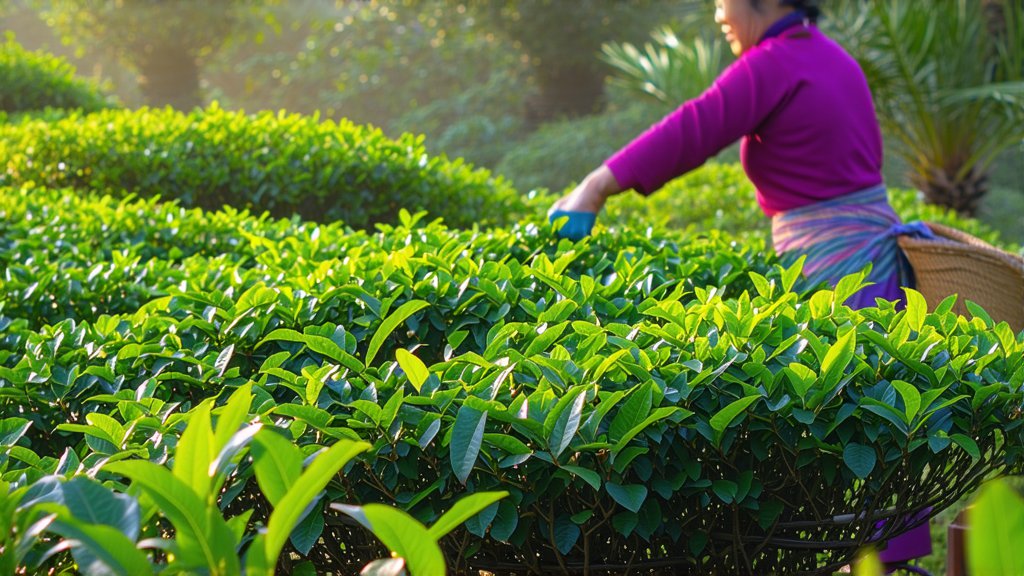
In the vast and varied landscape of Chinese tea culture, few varieties capture the imagination quite like Keemun Black Tea. Originating from the picturesque Qimen County in Anhui Province, Keemun, also known as Qimen Hong Cha, is not merely a beverage but a historical journey wrapped in the aromatic embrace of its rich, full-bodied flavor. As a distinguished tea culture researcher and master tea artisan, allow me to guide you through the intricate tapestry of Keemun's history, the diversity within its types, the meticulous craftsmanship behind its production, and the artful appreciation that defines its consumption.
Historical Roots and Cultural Significance
Keemun's story begins in the early 19th century during the Qing Dynasty when it was first introduced to Western markets. Its unique flavor profile quickly garnered acclaim, making it a staple in European tea houses and a symbol of sophistication. Named after the region of its origin—Qimen, meaning "Exquisite Gate"—Keemun signifies more than just a place; it embodies a legacy of excellence in tea cultivation and processing. Over time, Keemun has become synonymous with quality, representing the pinnacle of Chinese black tea craftsmanship.
Varieties Within the Genre
Keemun Black Tea is not monolithic but rather a spectrum of flavors and experiences. It encompasses several grades and styles, each offering a distinct sensory adventure:
-
Gongfu Keemun: This premium variety undergoes additional rolling stages, resulting in tightly twisted leaves that unfurl gracefully upon brewing. Its taste profile is characterized by a sweet, fruity aroma with hints of orchid and a smooth, velvety texture.
-
Special Grade Keemun: Often referred to as "Fancy Keemun," this grade features larger, more open leaves compared to Gongfu, imparting a bolder, more robust flavor with earthy undertones and a lingering finish.
-
Broken Keemun: Comprised of smaller leaf particles and broken tips, this type is favored for its quick infusion properties and intense flavor, making it ideal for blending or use in tea bags without compromising on taste.
The Art of Keemun Production
The creation of Keemun Black Tea is an art form that requires precision, patience, and a deep understanding of nature's rhythms. The process starts with the careful selection of young tea shoots, typically comprising the bud and the top two leaves. These are hand-picked during the spring season when the plants are at their freshest and most vibrant.
Once harvested, the leaves undergo a series of meticulous steps:
-
Withering: Freshly picked leaves are spread out to dry naturally under the sun or in a controlled environment, reducing moisture content and softening the cell walls for better rolling.
-
Rolling: The withered leaves are then meticulously rolled to break down cell structures, facilitating the oxidation process. In the case of Gongfu Keemun, this step involves multiple rounds of rolling to achieve the desired tightness and shape.
-
Oxidation: Exposed to controlled humidity and temperature, the rolled leaves undergo a chemical transformation where polyphenols react with oxygen, turning the green leaves brown and developing complex flavors and aromas.
-
Firing: To halt oxidation and fix the tea's character, the leaves are dried in large woks or drums at high temperatures. This step also enhances the tea's fragrance and removes any remaining moisture.
-
Sorting and Grading: Finally, the dried tea is sorted based on size, shape, and quality, ensuring consistency within each grade and removing any impurities.
Appreciating Keemun: A Ritual of Taste
To truly appreciate Keemun Black Tea, one must engage in the traditional Chinese tea ceremony, which elevates the act of drinking into a meditative experience. Here's how to savor every sip:
-
Warm the Teapot: Begin by rinsing your teapot and cups with hot water to预热 them and enhance the tea's aroma.
-
Measure the Leaves: Use approximately 3-5 grams of Keemun per 200ml of hot water (around 95°C). Adjust according to personal preference for stronger or milder flavors.
-
Steeping Time: For Gongfu Keemun, steep for about 3-5 minutes; Special Grade may require slightly longer due to its robust nature. Broken Keemun infuses quickly, around 2-3 minutes.
-
Observe the Transformation: Watch as the dry leaves unfurl and release their color and essence into the water, transforming it into a golden-red hue.
-
Inhale and Savor: Before taking your first sip, bring the茶杯 (tea cup) close to your nose and deeply inhale the fragrant steam rising from the surface. Notice the subtle nuances of floral, fruity, or earthy notes.
-
Tasting: Take small sips, allowing the tea to coat your palate fully. Pay attention to its complexity—the initial burst of flavor, mid-palate experience, and the lasting aftertaste. Each sip reveals new dimensions of Keemun's character.
-
Multiple Infusions: Keemun is known for its ability to be re-steeped multiple times, with each subsequent brew revealing different facets of its flavor profile. Adjust steeping times accordingly for later infusions.
In conclusion, Keemun Black Tea is more than just a drink; it's a testament to centuries-old traditions, meticulous craftsmanship, and the harmonious relationship between man and nature. Whether you're a seasoned connoisseur or a curious newcomer, exploring the world of tea, Keemun offers an invitation to embark on a sensory journey that transcends borders and connects us all through the universal language of tea.